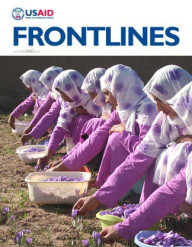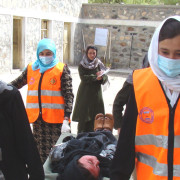Perhaps not since the fall of the Taliban has Afghanistan faced such a significant moment in its history. The Afghan people recently voted in record numbers in a historic election, the Afghan military leads security operations throughout the country and Afghanistan has made more strides than any other country in the past decade in measures of health, education and economic growth.
Working together, Afghans and Americans have built a foundation that will enable Afghanistan to seize a brighter future, and work to fight the forces of terror and extremism. As Afghanistan moves forward, so, too, must our commitment to development—one rooted in shared interests and mutual accountability.
Such progress in Afghanistan was unimaginable just over a decade ago. Our development investments have helped transform the fabric of life in Afghanistan, from significantly expanding education to quadrupling per capita GDP.
Far from fleeting, these results are supported by a new generation of champions—like Dr. Nasrin Oryakhil—who have the courage and vision to change their nation’s future. The director of the Malalai Maternity Hospital in Kabul, Dr. Oryakhil has helped rebuild her country’s health system from scratch.
Under the Taliban’s rule, more mothers, infants and children under the age of 5 died in Afghanistan, proportionally, than almost anywhere else in the world. Today, child mortality has been cut by 60 percent, maternal mortality has declined by 80 percent and access to health services have been expanded by nearly 90 percent. As a result, Afghanistan has experienced the largest increase in life expectancy and the largest decreases in maternal and child deaths of any country in the world.
Today, 3 million girls and 5 million boys are enrolled in school—compared to just 900,000 when the Taliban ruled Afghanistan by terror. At least 125,000 university students lead a new Afghan generation of global thinkers. There are now more than 3,000 women-owned businesses, a stark contrast to the days when all women lived under sharia law.
These are more than mere statistics.
Across Afghanistan, millions of children are growing up with mothers, going to school and looking forward to a university degree or a job when they graduate. Together, these children will create a more stable and prosperous future for Afghanistan.
According to a recent poll, more than 70 percent of Afghans feel more economically secure compared to five years ago, and the majority believes that Afghanistan is headed in the right direction. Strikingly, these development gains have been achieved for less than 3 percent of the total spent on our efforts in Afghanistan. Most importantly, it is spent under the condition that Afghanistan will continue to meet its own commitments to reform.
We are also taking action to foster a fair and inclusive society. In November, I traveled to Kabul to launch Promote, the largest program in our Agency’s history focused on empowering women. It will help 75,000 Afghan women achieve leadership roles in all parts of society, from business to academia to politics.
We are not blind to the challenges that face Afghans in the years ahead. For all the progress, the development achievements of the past decade can be reversed if we do not remain a vigilant partner with Afghanistan. But at this critical moment, as millions of girls go to school and a new generation votes, we cannot afford to step back and let the doors close on their future.












Comment
Make a general inquiry or suggest an improvement.